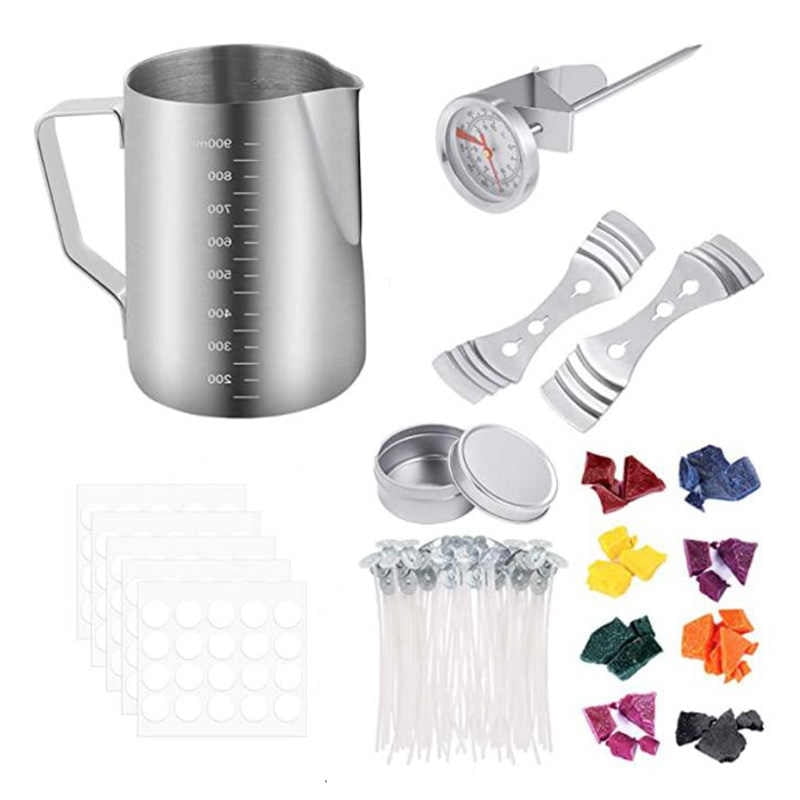The scent of pumpkin spice has become synonymous with the fall season, filling homes and creating a cozy atmosphere. From lattes to baked goods, the popularity of pumpkin spice has extended beyond just food and drinks. Pumpkin spice candles have become a must-have item for many households looking to embrace the autumnal spirit. However, as pet owners, it is essential to consider the potential risks these candles may pose to our furry friends.
Pet owners across the country have been raising concerns about whether pumpkin spice candles can harm their dogs. As we indulge in the warm and inviting aroma that fills our homes, it is important to be aware of any potential dangers that may exist for our beloved pets.
In this article, we will explore the ingredients found in pumpkin spice candles, examine canine sensitivity to certain fragrances, recognize symptoms of illness in dogs, provide preventative measures, and explore safer alternatives that still capture the essence of fall.
With so many different brands and varieties of pumpkin spice candles on the market today, understanding what goes into these products is crucial. Many of these candles contain potentially harmful substances such as essential oils or synthetic fragrances that can be toxic to dogs if ingested or inhaled in large amounts. Furthermore, some dogs may also have heightened sensitivity to certain candle fragrances due to their unique physiology.
As responsible pet owners, it is important for us to recognize any signs that our dogs may be experiencing ill effects from pumpkin spice candles. Symptoms such as coughing, sneezing, nasal discharge, difficulty breathing or eating, vomiting, diarrhea, lethargy, or changes in behavior could indicate a negative reaction. By identifying these symptoms early on and seeking veterinary advice when needed, we can ensure prompt medical attention for our furry companions.
Understanding the Ingredients
Pumpkin spice candles have become increasingly popular in recent years, as their warm and comforting scent has become synonymous with the fall season. However, pet owners may be concerned about the potential harm that these candles could pose to their furry friends. In this section, we will explore the ingredients commonly found in pumpkin spice candles and examine any potential harmful substances.
The Main Ingredients
To understand the potential risks associated with pumpkin spice candles, it is important to look at their main ingredients. Most candle manufacturers use a combination of fragrance oils, wax, and a wick. Fragrance oils are responsible for giving these candles their distinct pumpkin spice scent. However, it is important to note that fragrance oils can be made up of a complex blend of chemicals, some of which may be harmful to pets.
Potential Harmful Substances
One potential concern with fragrance oils is the presence of phthalates. Phthalates are chemicals that are often used to make fragrances last longer. Studies have shown that exposure to certain types of phthalates can lead to health issues in both animals and humans, including hormone disruption and respiratory problems.
Another ingredient commonly found in scented candles is paraffin wax. Paraffin is derived from petroleum and can release toxins into the air when burned. These toxins can irritate the respiratory system and may pose a risk to pets who have sensitive lungs or pre-existing respiratory conditions.
Additionally, some candle wicks contain heavy metals such as lead or zinc, which can also be toxic if ingested or inhaled by pets.
By understanding the potential harmful substances present in pumpkin spice candles, pet owners can make more informed choices about using these products around their dogs. In the next section, we will delve into why dogs may be more prone to reacting to certain candle fragrances.
The Science Behind Canine Sensitivity
Dogs have a remarkable sense of smell that is much more sensitive than humans. This heightened olfactory system allows them to detect even the most subtle scents in their environment. However, it also means that certain fragrances can be overwhelming and potentially harmful to their health. The science behind canine sensitivity to certain candle fragrances sheds light on why dogs may be more prone to react negatively to pumpkin spice candles.
One key factor is the presence of volatile organic compounds (VOCs) in many scented candles, including those with pumpkin spice fragrance. VOCs are chemicals released as gases from various products, such as paints, solvents, and cleaning supplies. When these candles burn, they emit VOCs into the air that dogs then inhale.
Studies have shown that exposure to high levels of VOCs can lead to respiratory problems in dogs. These include symptoms such as coughing, wheezing, sneezing, difficulty breathing, and even lung inflammation. Additionally, certain VOCs have been linked to allergic reactions in dogs, causing skin irritations and itching.
Furthermore, some candle fragrances contain essential oils that can be toxic to dogs. These oils are derived from plants and often used for their pleasant aroma. However, when ingested or absorbed through a dog’s skin or respiratory system, certain essential oils can cause adverse effects. For example, cinnamon oil is a common ingredient in pumpkin spice candles and can be highly irritating to a dog’s digestive system if consumed accidentally.
Recognizing the Symptoms
As pet owners, it is important to be vigilant and observant when it comes to our furry friends’ well-being. While pumpkin spice candles may create a warm and cozy atmosphere in our homes during fall, it is crucial to understand how they can potentially affect our dogs’ health. In this section, we will explore the symptoms that may indicate your dog is experiencing ill effects from the pumpkin spice candle.
One of the most common signs that your dog may be sensitive or reacting negatively to a pumpkin spice candle is excessive scratching. If you notice that your dog is consistently scratching various parts of their body, particularly after being exposed to the candle’s fragrance, it could be an indicator of irritation or allergies. Other skin-related symptoms include redness, inflammation, rashes, or hives on your dog’s skin.
Another symptom to look out for is respiratory distress. Dogs with sensitivities to certain fragrances may experience coughing, sneezing, wheezing, or difficulty breathing when exposed to pumpkin spice candles. Additionally, if you notice that your dog’s nose becomes runny or they start rubbing their face excessively after being around the candle’s scent, it could be a sign of respiratory discomfort.
Digestive issues can also occur as a result of exposure to pumpkin spice candles. Keep an eye out for vomiting or diarrhea in your dog after being exposed to the candle’s fragrance. These symptoms can indicate gastrointestinal upset and should not be ignored.
| Symptoms | Possible Indications |
|---|---|
| Excessive Scratching | Irritation or allergies |
| Respiratory distress | Coughing, sneezing, wheezing, difficulty breathing |
| Digestive issues | Vomiting, diarrhea |
Prevention is Key
As a responsible pet owner, it is crucial to take proactive measures to protect your furry friend from potential health hazards, including those related to candle usage. Here are some steps you can take to minimize the risks and keep your dog safe from any adverse effects that may arise from pumpkin spice candles or any other scented candles:
- Place Candles Out of Reach: Dogs are naturally curious and may be tempted to investigate or even play with lit candles. To prevent accidental burns or ingestion of harmful substances, always place candles in areas that are inaccessible to your dog, such as high shelves or secure candle holders.
- Opt for Pet-Friendly Candles: When purchasing candles, choose options that are specifically labeled as pet-friendly or non-toxic. Look for products made with natural ingredients and avoid candles that contain chemicals such as paraffin wax, lead wicks, or artificial fragrances which can be harmful when released into the air.
- Monitor Candle Usage: Avoid leaving lit candles unattended while your dog is in the same room. Even if they do not directly interact with the candle, they may accidentally knock it over or come too close, leading to potential hazards.
- Use Alternatives: Consider using flameless alternatives such as battery-operated LED candles or diffusers that release pet-safe aromatherapy oils instead of traditional scented candles. These alternatives provide a cozy atmosphere without the risk of fire or harmful fumes.
To keep your dog safe, it’s essential to be vigilant and educated about the potential risks associated with common household items like scented candles. By following these preventive measures and using safer alternatives when possible, you can create a comfortable environment for both you and your four-legged companion without compromising their health.
| Preventive Measure | Description |
|---|---|
| Place Candles Out of Reach | Keep candles in areas that your dog cannot access, such as high shelves or secure candle holders. |
| Opt for Pet-Friendly Candles | Choose candles labeled as pet-friendly or non-toxic, made with natural ingredients and without harmful chemicals. |
| Monitor Candle Usage | Avoid leaving lit candles unattended while your dog is in the room to prevent accidents and potential hazards. |
| Use Alternatives | Consider using flameless alternatives like battery-operated LED candles or pet-safe aromatherapy diffusers instead of traditional scented candles. |
Safer Alternatives
As a pet owner, it is important to prioritize the safety and well-being of our furry friends. While pumpkin spice candles have become synonymous with the cozy vibes of fall, it is essential to consider safer alternatives that do not pose health risks to our dogs. Thankfully, there are plenty of pet-friendly candle options available that can still capture the essence of the season without harming your four-legged companion.
When looking for a pet-friendly candle, it is crucial to carefully read the labels and choose products made with natural ingredients. Opting for soy or beeswax candles instead of those made from paraffin wax can significantly reduce potential harm to your dog. Paraffin wax candles often contain harmful chemicals that can be toxic when inhaled or ingested by pets. However, soy and beeswax candles are natural and produce less soot and toxins when burned.
Another alternative worth considering is using flameless candles or diffusers. These options offer a safe way to enjoy the warm ambiance and fragrances without any risk of burning accidents or harmful fumes. Flameless candles often use LED lights to mimic the flickering effect, creating a similar cozy atmosphere while eliminating any potential danger for pets.
To further enhance the coziness of fall without compromising your dog’s health, you can also explore non-toxic essential oil diffusers or room sprays. These products typically utilize natural plant extracts as fragrance sources rather than synthetic chemicals found in traditional candles. It is crucial to ensure that these oils are specifically designed for use around pets and avoid any oils that can be toxic to dogs such as tea tree oil or eucalyptus oil.
By choosing safer alternatives such as soy or beeswax candles, flameless options, or non-toxic essential oil diffusers, you can create an inviting environment that captures the spirit of fall while keeping your dog safe. It is essential to remember that every dog may have different sensitivities, so pay attention to your pet’s behavior and any signs of discomfort when introducing new fragrances into the home.
Prioritizing your dog’s health and well-being will allow you to enjoy the cozy atmosphere of fall while ensuring a safe environment for everyone in your household.
Consulting the Expert
Pumpkin spice candles have become a popular item during the fall season, as they offer a warm and cozy ambiance in our homes. However, pet owners are growing increasingly concerned about the potential impact of these candles on their dogs’ health. To gain more insight into this issue, it’s important to consult with veterinary experts who can provide professional guidance.
One of the main concerns for pet owners is the ingredients used in pumpkin spice candles. Many commercial candles contain artificial fragrances that can be harmful to dogs when inhaled or ingested. Some common ingredients found in these candles, such as benzene and formaldehyde, are known to be toxic to both humans and animals. Consulting a veterinarian can help pet owners understand how these substances may affect their dogs specifically.
During a consultation with a veterinarian, it is crucial to discuss any pre-existing conditions or sensitivities your dog may have. Dogs have different sensitivities compared to humans due to their unique physiology. They may react differently or more strongly to certain fragrances present in pumpkin spice candles. A vet can provide valuable information about the specific risks involved and advise on precautionary measures that can be taken.
To seek veterinary advice on the impact of pumpkin spice candles on dogs’ health, there are a few important questions you may want to ask during your visit:
- Are certain dog breeds more susceptible to adverse reactions from fragrance exposure?
- How can I recognize if my dog is experiencing negative effects from the candle?
- What immediate steps should I take if my dog shows symptoms of illness?
By consulting an expert, you can better understand the potential risks associated with using pumpkin spice candles around your dog and take necessary precautions to ensure their well-being throughout the fall season.
Suggested Actions
- Schedule an appointment with a veterinarian experienced in toxicology or dermatology.
- Prepare a list of questions regarding your concerns about pumpkin spice candle exposure.
- Be open and honest with your veterinarian about any symptoms your dog may be exhibiting.
- Follow your vet’s advice and recommendations for safeguarding your dog’s health.
Remember, seeking professional veterinary advice is key to making informed decisions regarding the health and well-being of our furry friends.
Real-Life Experiences
Pet owners hold a wealth of knowledge and experiences when it comes to the well-being of their furry friends. In the case of pumpkin spice candles, many pet owners have reported adverse effects on their dogs, raising concerns about the potential harm these fragrant candles may pose. These real-life experiences shed light on the need for caution and further investigation into the impact of such candles on canine health.
Persistent Respiratory Issues
One common observation among pet owners is that their dogs develop persistent respiratory issues after exposure to pumpkin spice candles. Symptoms include excessive coughing, sneezing, wheezing, and difficulty in breathing normally. Some dog owners have even noticed their pets experiencing shortness of breath or labored breathing. These symptoms are indicative of respiratory irritation or inflammation, which may be linked to the potent fragrance compounds found in pumpkin spice candles.
Gastrointestinal Disturbances
Another set of symptoms commonly reported by pet owners is gastrointestinal disturbances following exposure to pumpkin spice candles. Dogs have been observed vomiting or having diarrhea after coming into contact with these fragrances. It is believed that ingestion or inhalation of certain chemical compounds present in the candle’s aroma can disrupt a dog’s digestive system, leading to these unpleasant and uncomfortable symptoms.
Behavioral Changes
Some dog owners have also noticed behavioral changes in their pets after being exposed to pumpkin spice candles. These behaviors range from restlessness and hyperactivity to lethargy and decreased appetite. While further research is needed to determine the precise connection between fragrance exposure and behavioral changes in dogs, it is important for pet owners to remain vigilant about any shifts in their dog’s behavior when using scented candles.
It is crucial for pet owners to take note of these real-life experiences and consider them as valuable indicators of the potential adverse effects of pumpkin spice candles on dogs. These accounts highlight the importance of monitoring our pets closely and seeking prompt veterinary advice if any concerning symptoms arise.
In the next section, we will delve deeper into seeking veterinary advice on the impact of pumpkin spice candles on canine health, providing pet owners with expert guidance in making informed choices to protect their dog’s well-being during the fall season.
Conclusion
As pet owners, it is our responsibility to prioritize the health and well-being of our furry friends. With the growing popularity of pumpkin spice candles during the fall season, it is important to be aware of their potential effects on our dogs. While there is still limited scientific research on this specific issue, it is crucial to take precautions and make informed choices to keep our pets safe.
Although the ingredients in pumpkin spice candles may vary depending on the brand, it is worth understanding that some common substances found in these candles can be harmful to dogs. Ingredients like cinnamon, nutmeg, and essential oils can cause a range of symptoms in dogs, from skin irritations and respiratory issues to gastrointestinal problems. It is always advisable to carefully read the labels before purchasing any scented candle for your home.
Recognizing the symptoms associated with adverse effects from pumpkin spice candles is a crucial step in protecting your dog’s health. Be vigilant for signs such as excessive sneezing, coughing, lethargy, vomiting, diarrhea, or changes in behavior after exposure to the candle’s fragrance.
If you notice any concerning symptoms or changes in your dog’s health, it is recommended to consult with a veterinarian as soon as possible. They can provide personalized advice based on your dog’s individual needs and help determine whether the candle may have caused the negative reaction.
Additional Resources
Conclusion: Making Informed Choices to Protect your Dog’s Health during the Fall Season.
In conclusion, as pet owners, it is our responsibility to make informed choices and ensure the safety and well-being of our furry companions during the fall season. The growing popularity of pumpkin spice candles has raised concerns regarding their potential harm to dogs. Understanding the ingredients and recognizing the symptoms of ill effects are crucial steps in protecting our pets.
By familiarizing ourselves with the harmful substances that may be present in pumpkin spice candles, we can make educated decisions when choosing which candles to use in our homes. It is essential to look for alternatives that are safe for pets while still capturing the cozy ambiance of fall. Pet-friendly candle options are available, allowing us to enjoy our favorite seasonal scents without putting our dogs at risk.
Consulting with a veterinarian is an important step in understanding the impact of pumpkin spice candles on dogs’ health. Veterinarians can provide expert advice tailored to your dog’s specific needs and assess any potential risks or adverse reactions your dog may experience. They can help determine if your dog is exhibiting symptoms related to exposure to these candles or if there may be another underlying cause.
Real-life experiences from other pet owners who have noticed adverse effects on their dogs due to pumpkin spice candles can also serve as valuable anecdotes and warnings. Sharing these stories can raise awareness and help others recognize potential hazards before their own pets are affected.
Ultimately, by taking precautions, staying informed, and making responsible choices, we can create a safe environment for our canine companions during this festive time of year. Let us remember that their well-being should always be a top priority, even when indulging in seasonal pleasures like fragrant candles.
Frequently Asked Questions
Are pumpkin scented candles bad for dogs?
Pumpkin scented candles can potentially be bad for dogs, depending on the specific ingredients used in the candle. Some candles may contain artificial fragrances or essential oils that can be harmful when ingested or inhaled by dogs. When a dog inhales the scent of a pumpkin candle, it could cause respiratory irritation or other allergic reactions.
Additionally, if a curious dog were to chew on or ingest the candle, it could lead to digestive upset or even more serious health issues. It is always important to carefully monitor pets around candles and ensure they are not exposed to any potentially toxic substances.
Can candle fumes make dogs sick?
Candle fumes have the potential to make dogs sick, especially if they are exposed to them for an extended period of time or in a poorly ventilated area. The fumes emitted from certain candles can irritate a dog’s respiratory system and cause symptoms like coughing, sneezing, difficulty breathing, or watery eyes.
Dogs with pre-existing respiratory conditions such as asthma may be particularly sensitive to these fumes. It is advisable to avoid burning candles around dogs and choose alternative methods of creating pleasant scents in the home that do not pose a risk to their health.
Is pumpkin pie essential oil toxic to dogs?
Pumpkin pie essential oil is not recommended for use around dogs as it can be toxic to them if ingested or applied topically without proper dilution. Essential oils should never be given orally to dogs as they lack the necessary enzymes to metabolize them properly.
The concentrated nature of essential oils can lead to adverse effects such as gastrointestinal upset, skin irritation, neurological issues, or even organ damage in some cases. It is crucial for pet owners to consult with a veterinarian before using any essential oils around their dogs and opt for pet-safe alternatives specifically designed for use with animals.

Welcome to my candle making blog! In this blog, I will be sharing my tips and tricks for making candles. I will also be sharing some of my favorite recipes.





